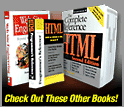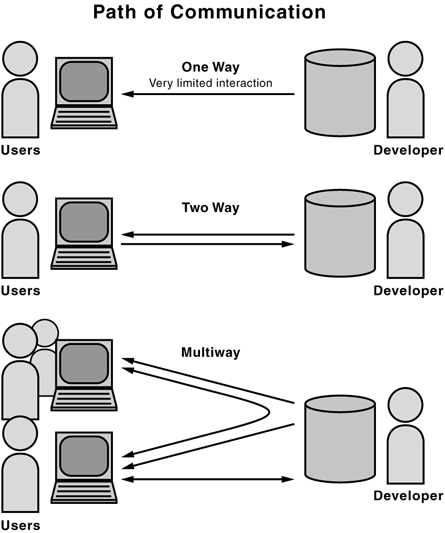

 |
 |
|||

|
Chapter 1: What Is Web Design?
The Medium of the Web
While the Web pyramid analogy is a very abstract way of describing Web design, it is a useful tool for showing the interplay of the various components of Web building. A more practical way to discuss Web design is to think of the various components of the Web medium, as shown in Figure 1-2.
Today's Web sites are primarily a basic client-server network programming model with three common elements: The server-side This includes the Web server hardware and software as well as programming elements and built in technologies. The technologies can range from simple CGI programs written in PERL to complex multi-tier Java based applications and include backend technologies such as database servers that may support the Web site. The client-side The client-side is concerned with the Web browser and its supported technologies, such as HTML, CSS, and JavaScript languages and ActiveX controls or Netscape plug-ins, which are utilized to create the presentation of a page or provide interactive features. The network The network describes the various connectivity elements utilized to deliver the Web site to a user. Such elements may be the various networks on the public Internet or the private connections within a corporation—often dubbed an intranet. Complete understanding of the technical aspects of the Web medium, including the network component, is of paramount importance in becoming a great Web designer, and much of this book will focus on these details. The Web pyramid diagram again reminds us of the important user component, as Web design really is a networked programming pursuit with certain user-focused issues. Web sites are used as a communication mechanism between a site's owners and its users, and occasionally between its users and each other. Site owners usually set the message and define the basic rules of interaction, while users are those who visit the site and attempt to use the content or facilities presented there. The communication path between site owner and visitor can vary. Site owners often set information for users to consume, in somewhat of a one-way interaction. Other times users can post information for site owners or even other users, creating more of a multi-way communication path, as illustrated here:  During any communication, most users are generally unaware of the medium when things are working correctly. While users are affected by the medium, they often do not distinguish the individual components such as network, HTML, style sheets, and JavaScript—unless something goes wrong. In the negative case of a slow site, or one that causes visual or functional errors, the user may notice the medium but still may not distinguish which aspect of it is causing the problem. Users tend to see not the parts themselves, but the sum of them. This makes it important to think of sites as a whole, in order to understand how users see them. Next: Types of Web Sites
|
Overview | Chapters | Examples | Resources | Buy the Book! |